Model Placer
What it is ℹ️
Place complex models in sequence and seamlessly connect them.
When to use 🧭
- When you want to place models in sequence or in a line
- When you want to place complex models in sequence and automatically merge matching parts within models
Panels 🎛️
Model Template Settings
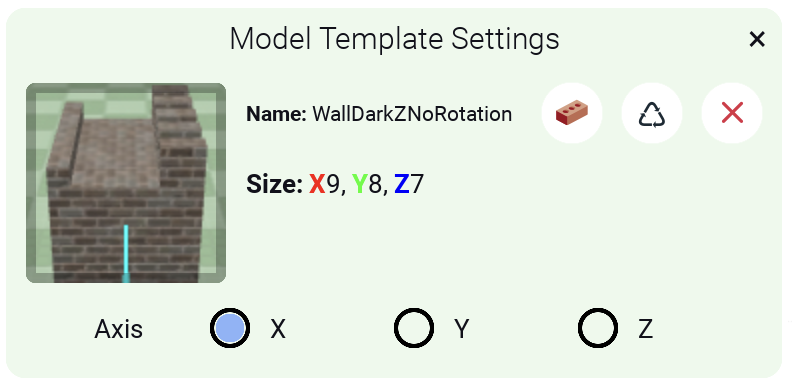
Select a model or part to use as a template.
The selection box shows the currently selected template, its name, and size (X×Y×Z), and whether the size is read from PrimaryPart (if present) or from the model’s bounding box.
You can change the template by selecting another model and clicking "Change to Model".
- Add PrimaryPart button: Adds a
PrimaryPartto the model in the current orientation (available only forModel). If you have problems with model orientation, create or adjust aPrimaryPartand try again. - Reload Template button: Reloads template. Useful if you make changes to your template model.
- Reset Template button: Resets template
Axis
Controls the direction in which consecutive models are placed. The preview shows a neon blue guide along the primary axis. Saved per template — see Settings persistence below.
- If axis detection behaves unexpectedly, add or adjust a
PrimaryPartusing "Add primary part 🧱" and try again.
Corner Settings / Other Settings
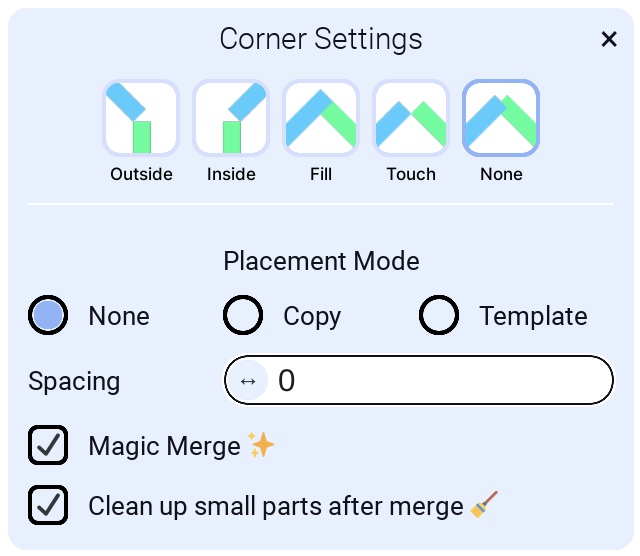
Corner Alignment modes:
-
Outside: Has one corner always touching (same as Inside, just opposite)
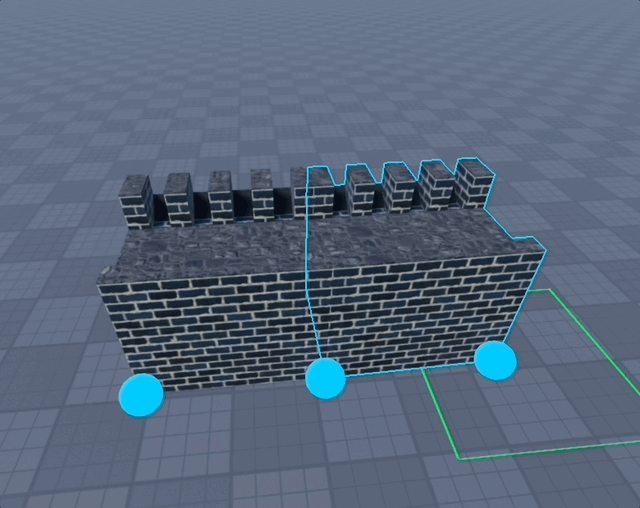
Using Magic Merge ✨:
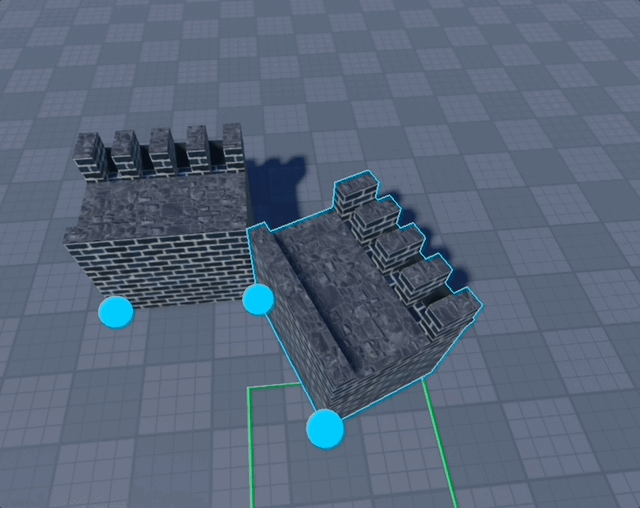
-
Inside: Has one corner always touching (same as Outside, just opposite)
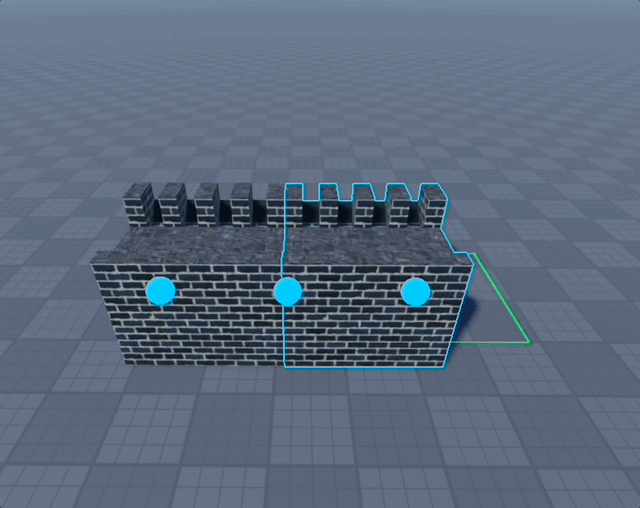
Using Magic Merge ✨:
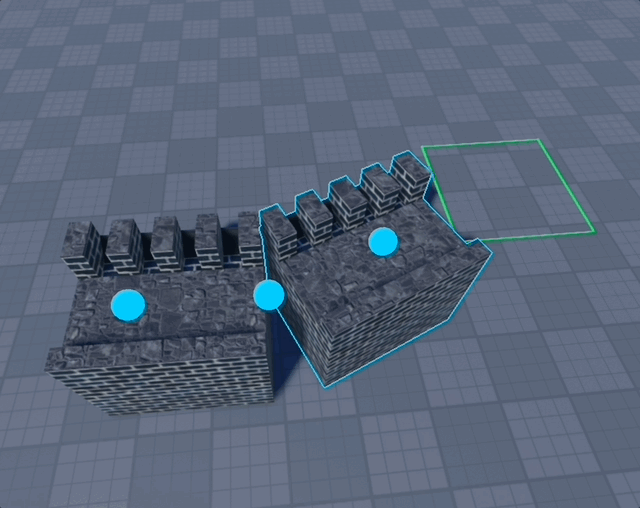
-
Fill: Moves the model so its corners connect and there is no gap
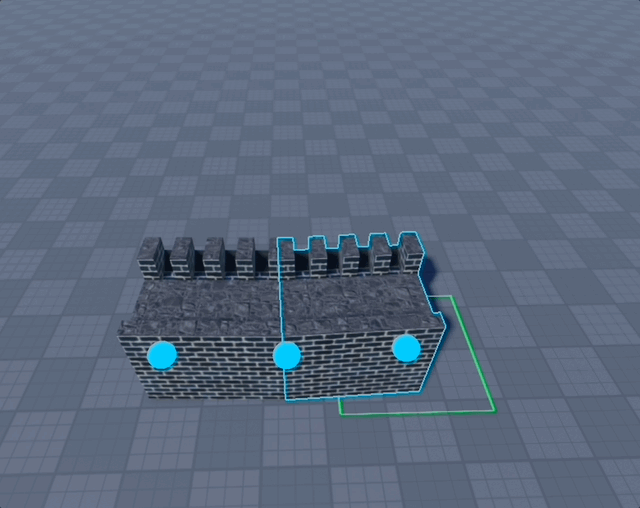
Using Magic Merge ✨:
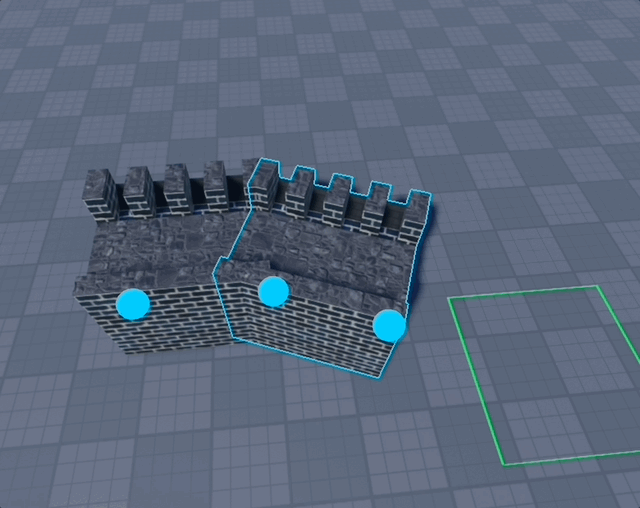
-
Touch: Has the closest corner always touching (dynamic version of Outside/Inside)
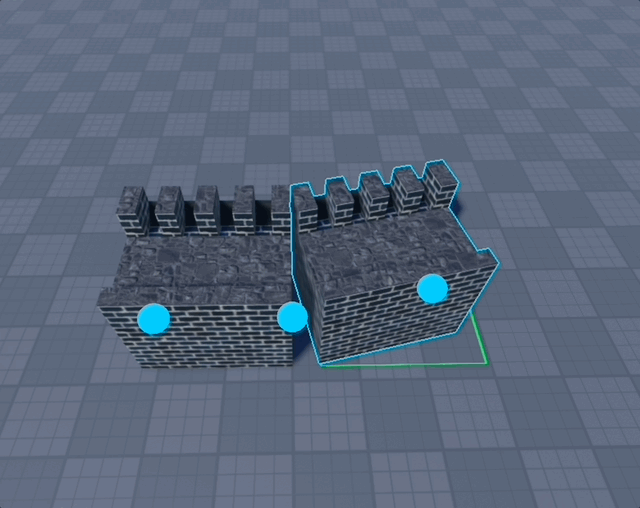
Using Magic Merge ✨:
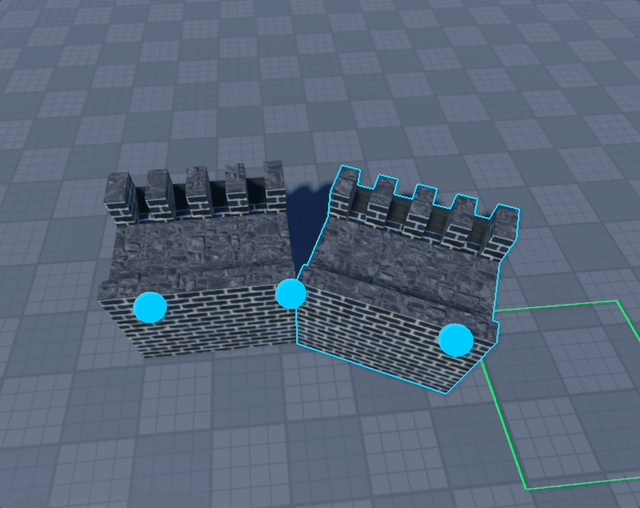
-
None: Center of the model is touching
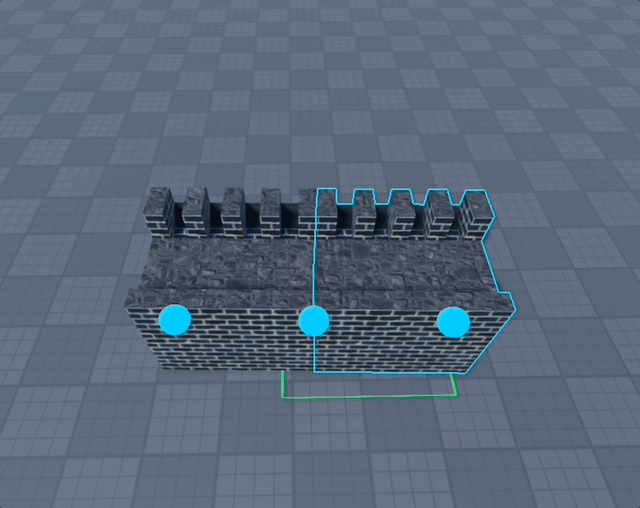
Using Magic Merge ✨:
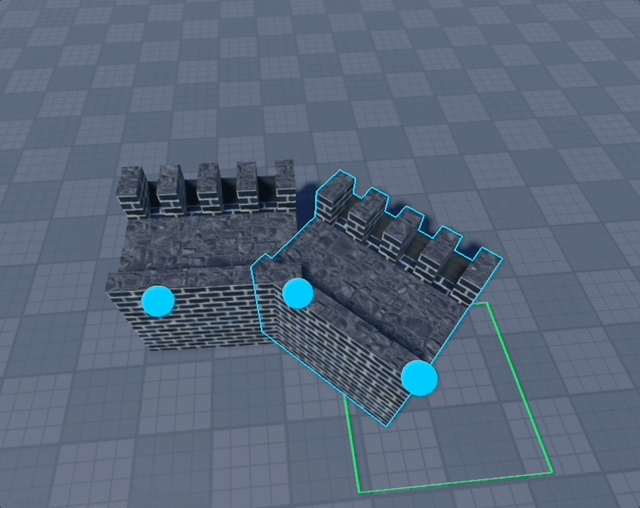
-
Magic Merge ✨: Seamlessly merges connecting parts as you place models; helpful for walls/fences so segments look continuous. The chosen corner mode affects the merge: "Fill" removes or reduces parts, "Touch" extends parts, and "None" does both. Try different modes to get the effect you want.
-
Clean up small parts after merge 🧹: Removes unneeded tiny parts left after Magic Merge. These can appear when "Fill" or "None" corner modes are selected.
Placement Mode
Choose how the plugin places your model as you add points:
- None: Places a single model per click.
- Copy: Places repeated copies of the current template up to the current mouse position from the previous point.
- Template: Uses Start/End Segment % to create start/end caps and repeats/extends the middle segment between points (best for modular fences, walls, and roads).
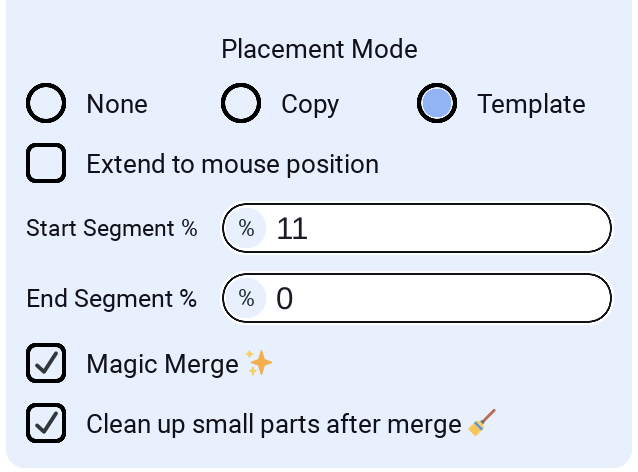
Template mode
How it behaves
- Uses Start/End Segment % to split the template into start cap, middle span, and end cap along the primary axis.
- At each point, the start cap is placed; between points, the middle span repeats or extends; the end cap closes the run when configured.
- Preview shows a color legend (start/end: blue; middle: green) and a studs readout for the selected percentages.
Start/End segments
- 0/0 (default): single segment is used as‑is (no caps).
- Only Start or only End is set: two segments (a cap at one side and the middle).
- Both Start and End are set: three segments (start cap, middle, end cap).
- Valid range is 0–49% for both.
Extend to mouse position
- Enabled: The template extends exactly to your mouse position, allowing for any length.
- Disabled: The template snaps to fixed segment widths based on your model size — ideal when repeating parts must line up for Magic Merge.
Using model with start segment defined
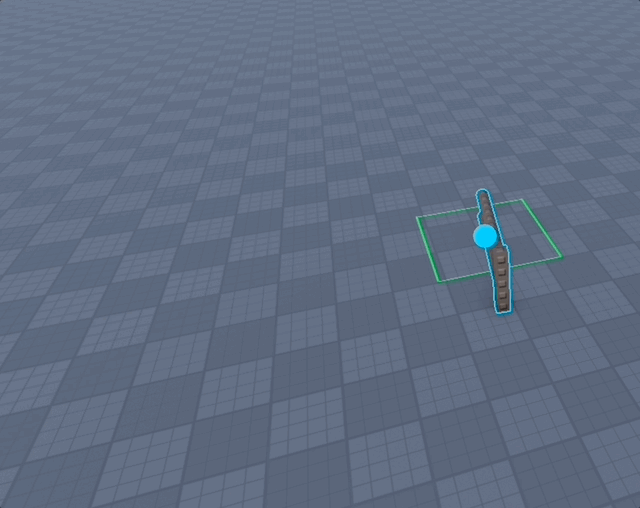
Using similar model without start segment (0%)
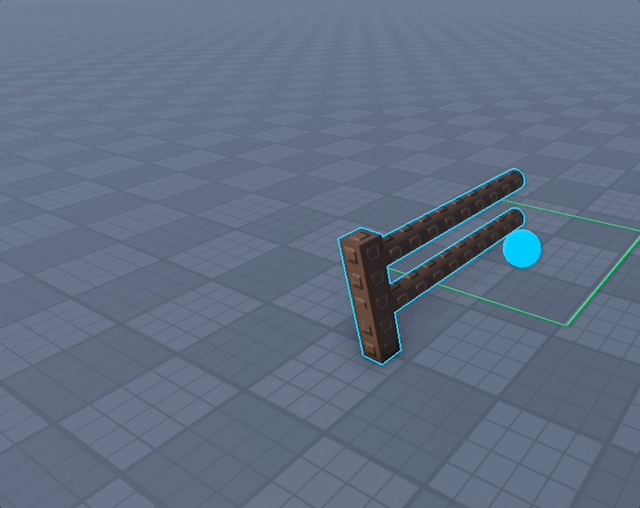
Spacing:
- Spacing (studs) applies in None and Copy placement modes. In Template mode, spacing is governed by the segmenting/segment widths.
Copy mode
How it behaves
- Places multiple models in one click between the last point and your current mouse position.
- With Spacing, each model after the first is placed after a full pre-gap; all gaps are equal (including first → second).
- With Extend to mouse position enabled, the run ends exactly at your mouse position.
Extend to mouse position
- Enabled: the next point recorded is your exact mouse position (not the clamped repeat end). This lets you finish runs precisely at arbitrary lengths.
- Disabled: the path advances by whole model lengths (plus spacing) from the last point.
Spacing with Copy
- Spacing is applied as a full pre-gap before each placed model (except the very first), so the first‑to‑second gap matches all other gaps.
- This also applies in the live preview (after your first point, only the repeated preview copies are rendered, so the preview spacing matches the final result).
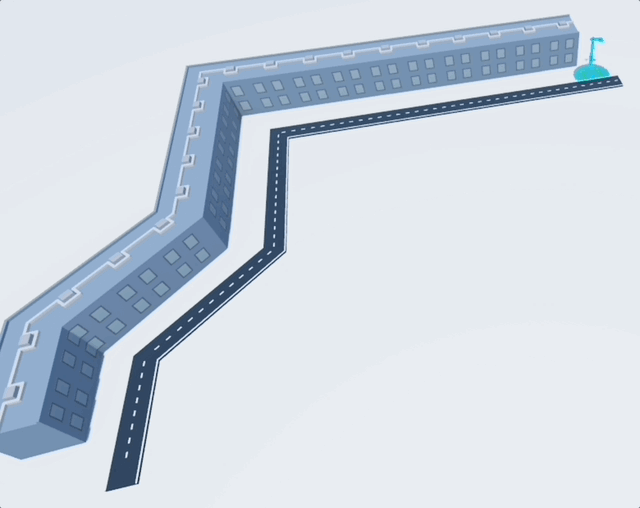
Settings persistence
Some settings are saved to the template model/part as attributes instead of plugin storage. This makes switching templates easier — you do not have to reconfigure each time.
Settings saved to template attributes:
StartSegmentPercentEndSegmentPercentPrimaryAxisMagicMergeEnabled
Note: These attributes are stored on the template only. The plugin does not keep them on finalized placed results.
Related 🔗
- See Common Settings for shared options across builders
- See Shortcuts for shared options across builders